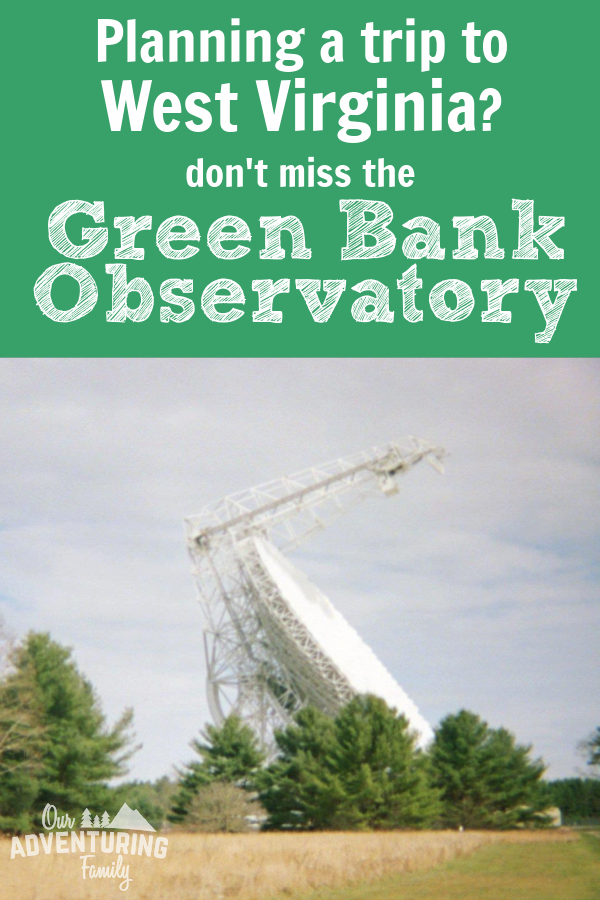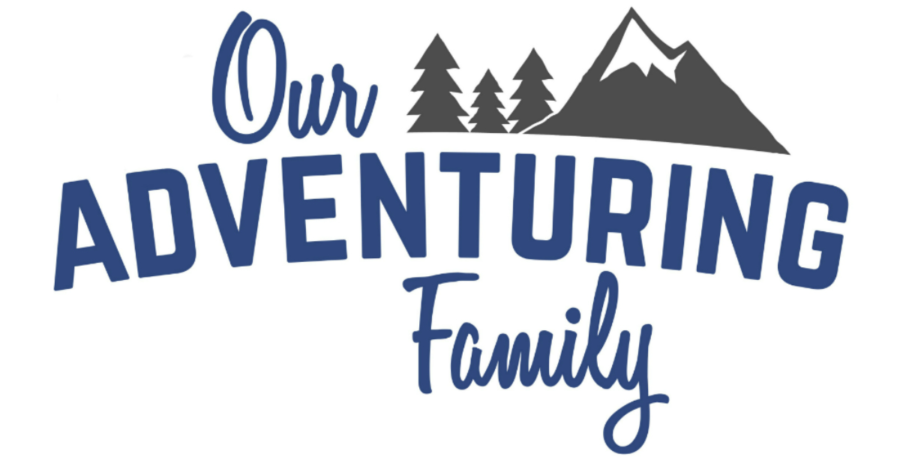This post may contain affiliate links. As an Amazon Associate I earn from qualifying purchases, but there is no additional cost for you. Please see my Disclosure page for more information.
Last fall, Sunshine and I went to Green Bank Observatory with her Scout troop. We had the benefit of having an astronomer with us who has done research at Green Bank, so we had the inside track, but even with out that, they have a lot to offer.
One such offering is Scout weekends, where Scouts can earn badges. Our Scouts earned their Astronomy merit badge and had a great learning experience. Our astronomer brought some telescopes and we were able to see the craters of the moon our first night there. The next two days were spent learning about astronomy, radio telescopes, programming coordinates into one of the smaller radio telescopes (they have one set aside for educational groups to use), and touring the site.
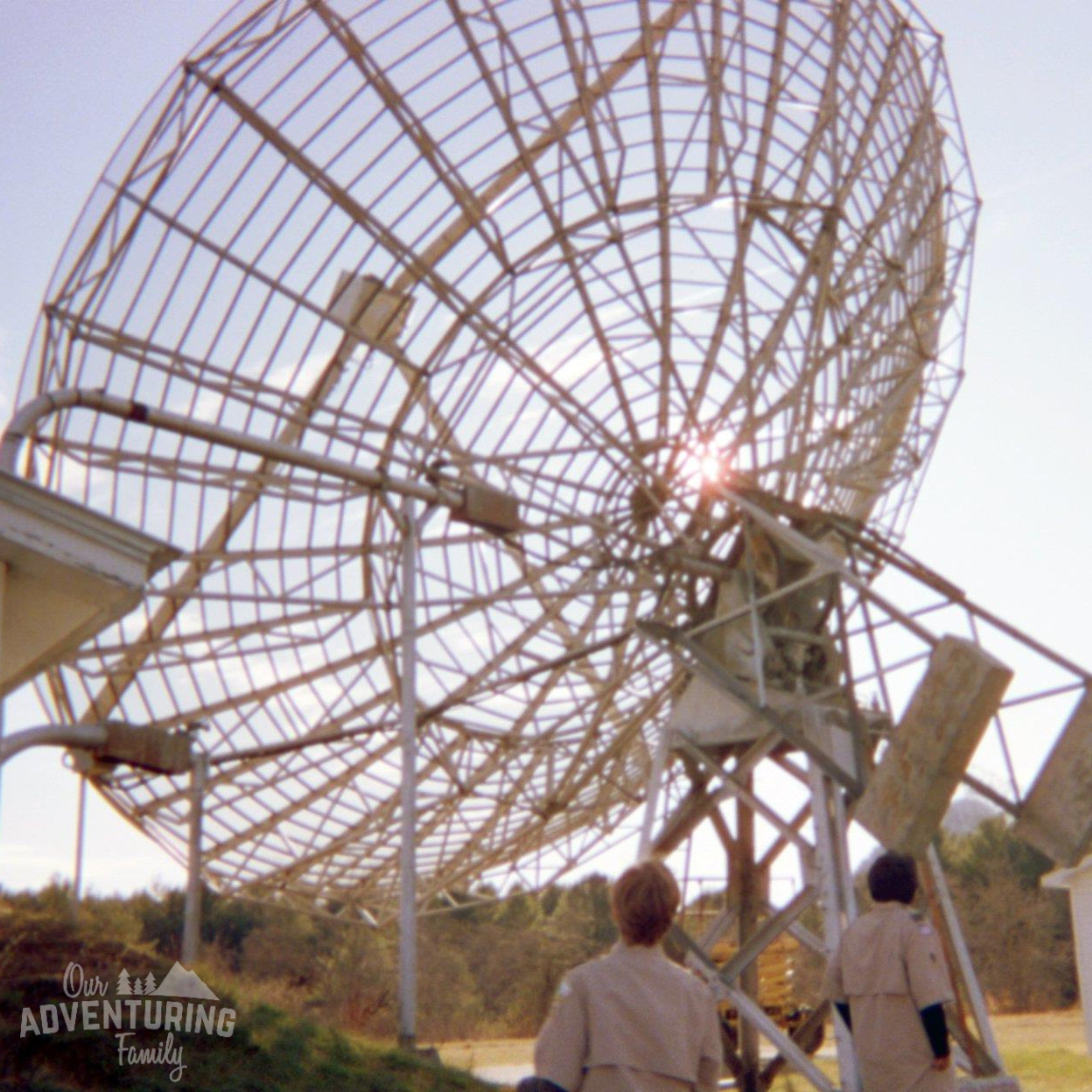
While they are open for educational groups, members of the general public can visit as well. If you’re in the area, it’s definitely worth a visit!
Where is Green Bank Observatory?
It’s near Cass, West Virginia, in the mountains where West Virginia borders Virginia.
What is Green Bank Observatory?
It’s a research campus started in 1957, currently with eight radio astronomy telescopes. Because those radio telescopes don’t work well with a lot of interference, the area is in a National Radio Quiet Zone (more on that in a minute). Radio telescopes study radio frequencies of the electromagnetic spectrum emitted by objects in space. They are large dish-shaped arrays, rather than a reflecting telescope that you look through to observe the moon, passing asteroids, and so on.
The world’s largest fully steerable telescope, the Green Bank Telescope (GBT) is located on the grounds of the observatory. The dish covers more than 2 acres!
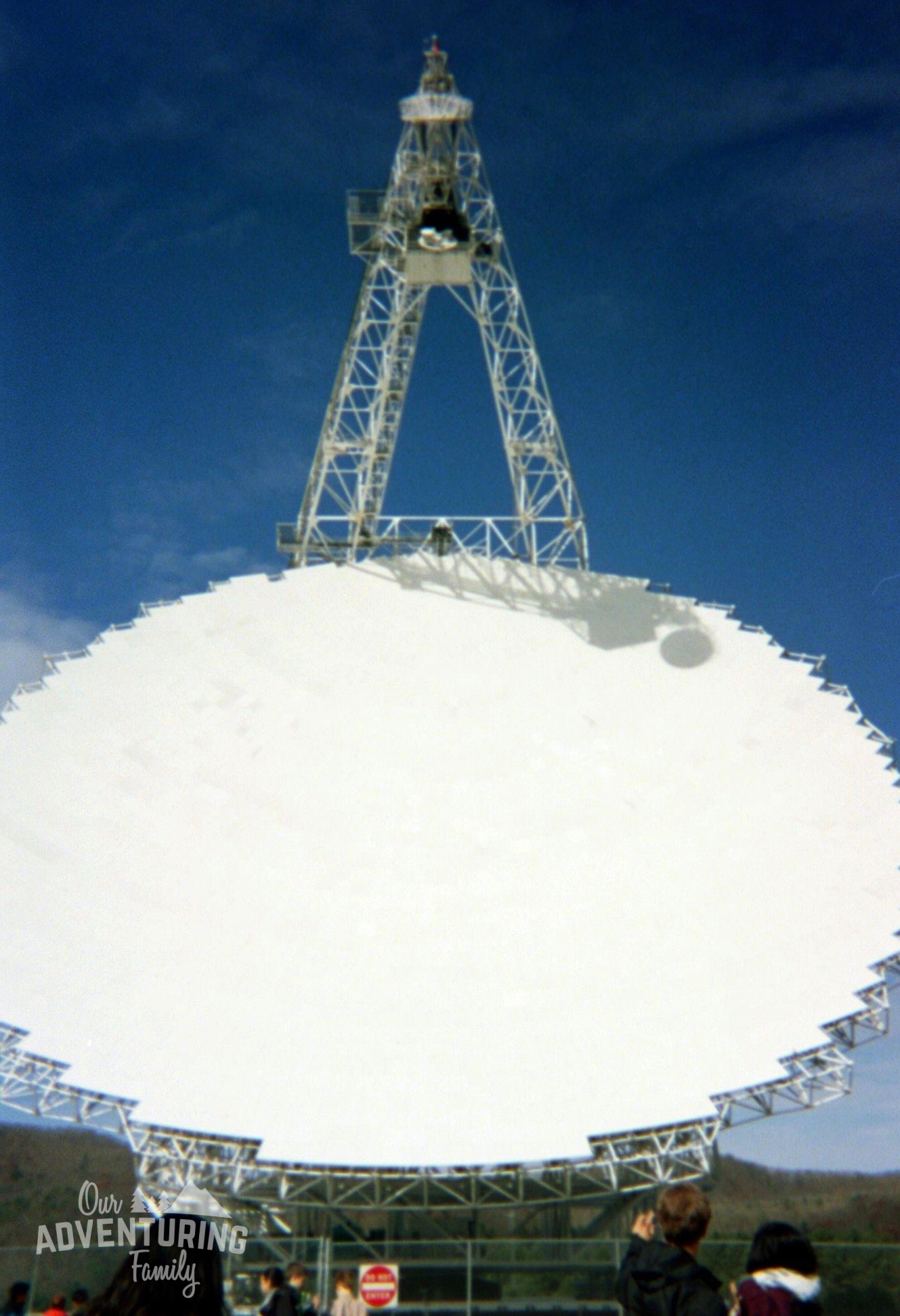
Where should you stay while visiting Green Bank Observatory?
If you’re part of an educational group like we were, you can stay with your group in the bunkhouse or on-site campground. It was early November when we went, so we stayed in the bunkhouse rather than freezing in our tents and sleeping bags in 20* temps.
Otherwise, there are several campgrounds, motels, BnBs, and AirBnBs in the area.
Important details to know
A National Radio Quiet Zone designation means that radio transmissions within the area are heavily regulated. The Quiet Zone itself is quite large (about 13,000 square miles), but regulations are tightest closest to Green Bank. Items that emit high amounts of electromagnetic radiation like microwaves and wifi routers aren’t allowed within a twenty mile radius of Green Bank.
On the grounds of the Observatory, the regulations are even tighter. Electronics are allowed in the buildings, but once you go through the gate to the telescopes, no electronics are allowed. This includes cell phones, computers, smart watches, FitBits, etc. You can bring an old fashioned film camera if you want to take pictures while looking at the telescopes. Most of the photos in this post were taken with a disposable point-and-shoot.
Many of the buildings on the grounds of the Observatory are delightfully retro, though the Science Center is a much more modern, up-to-date building. Part of the educational program we participated in had us working in a computer lab in a room-sized Faraday cage. Super cool!
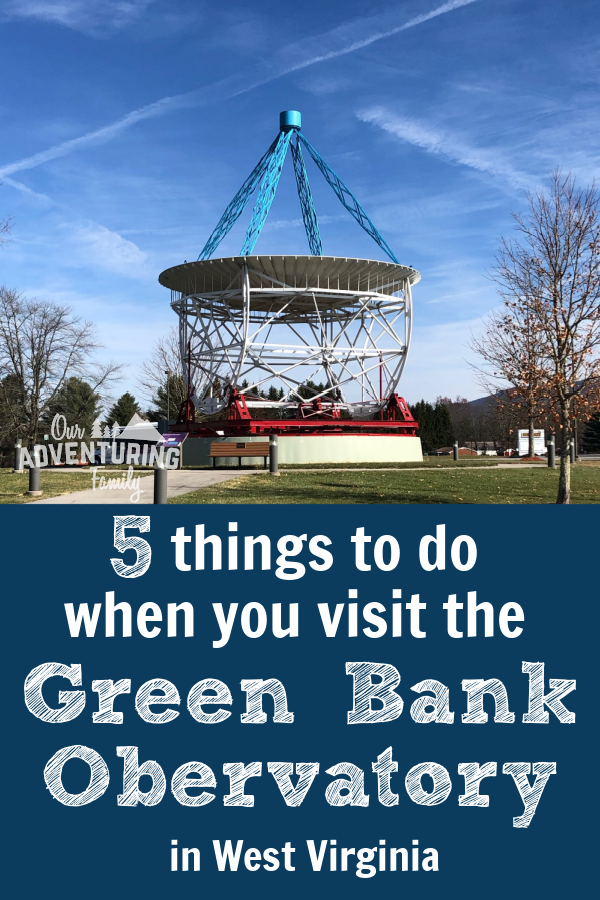
5 things to do when visiting Green Bank Observatory
1. Take a guided tour
Normally, one hour tours are offered to the public at 11am, 1pm, and 3pm. Adults 11-64 are $6, Seniors 65+ are $5, and children 10 and under are free. The tours include a video, demos, and a bus tour. At the beginning of the tour is stop at an observation deck where you can use your cell phone to take a picture of the Green Bank Telescope (GBT), before you have to turn your phone off for the rest of the tour.
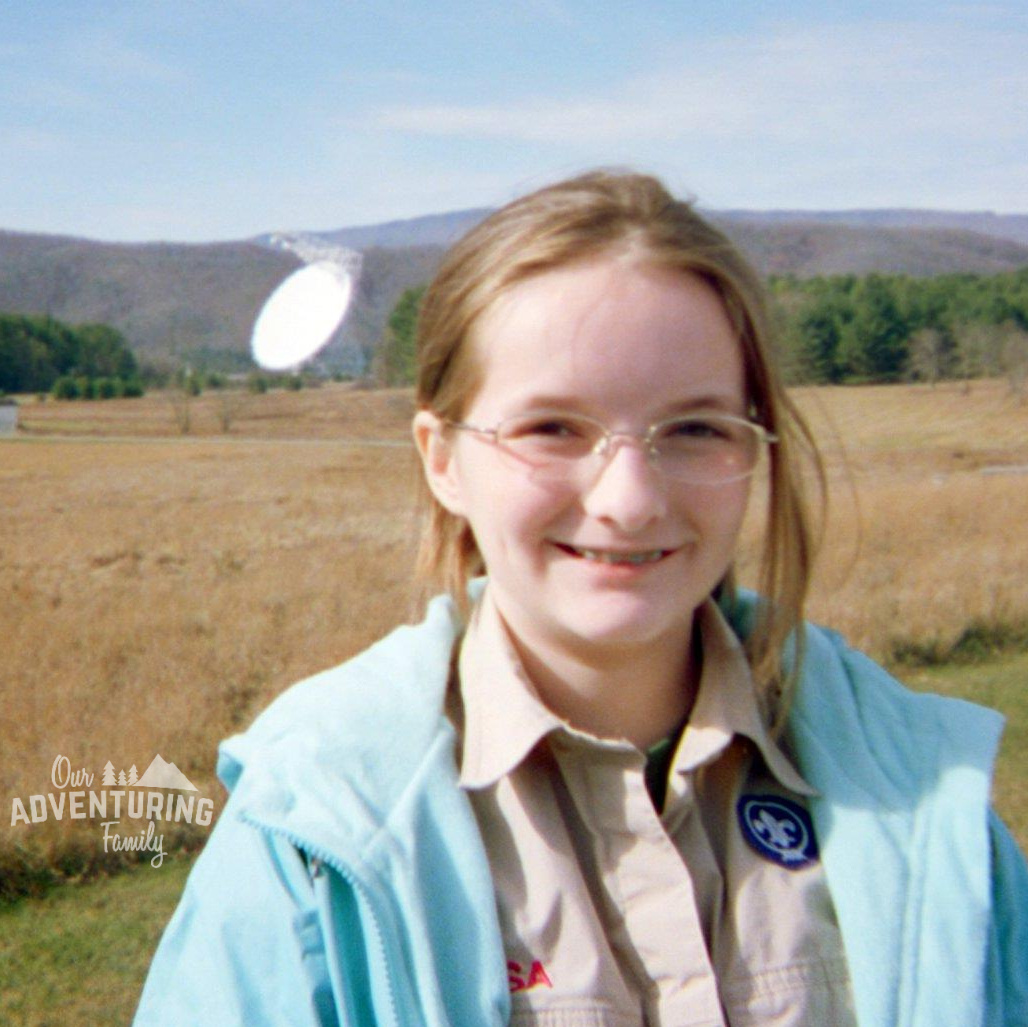
Unfortunately, guided tours are on hold because of the pandemic, but you can still visit the Observatory. The Science Center, cafe, and gift shop are closed, but you can take a self-guided walking tour. Which takes us to the next item.
2. Take a self-guided walking tour of the observatory grounds
You can download a map for self-guided walking tours here. Be sure you follow the warnings about leaving electronics behind. The tour is free and can be taken anytime before dark. The self-guided walking tour is an option even when the Observatory is operating normally. The walk to the GBT is 1.5 miles, so plan for a 3 mile round trip.
In fact, locals will walk their dogs on the roads leading to the telescopes as vehicle traffic is very limited.
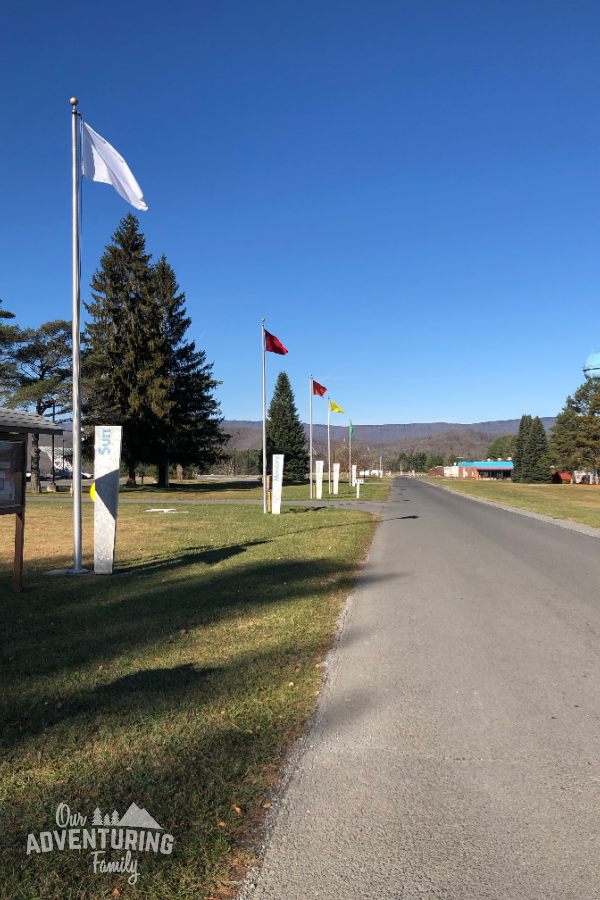
3. Participate in an educational program
The Science Center is open to the public and has an interactive exhibit hall that is free to visitors as well as a gift shop and cafe. Be sure to check if they’re open before you go, they’re currently shut because of the pandemic.
Green Bank Observatory also offers free educational programs for groups in 3rd grade through grad school. These groups can be from schools, Scouts, homeschool groups, church youth groups, and so on. Offerings include day trips, overnight trips, and Scout weekends. Summer camps for rising 9th graders with a focus on minorities are also usually offered.
With their usual programming shut down, the Observatory is currently offering a free weekly virtual tour on Friday afternoons. While they are free, you do need to register and space is limited. There are also some activities to try at home.
4. Visit Cass Scenic Railroad State Park
Venture fifteen minutes down the road and you’ll find Cass Scenic Railroad State Park. As the name implies, there is a scenic railway. Per the website, “Cass Scenic Railroad State Park is one of America’s only authentic operating museums of lumber railroading.” The town of Cass was founded in 1901 as a company town for loggers, though the mill and railroad were shut down in 1960.
Attractions include the company store, a restaurant and soda fountain, a historical theater, and a historical museum. And of course, you can ride historic steam locomotives or diesel engines. Book a ride here. Trips range in length, with longer ones offering meals and shorter ones offering snacks.
The railroad is operating at a reduced occupancy rate, but they are currently open.
5. Walk or ride the Greenbrier River Trail
Near Cass Scenic Railroad SP is the Greenbrier River Trail. The trail is on and old railroad bed and is 78 miles long. Current uses include hiking, biking, horseback riding.
Have you been to Green Bank Observatory? What was your favorite part?
